Kevin Callanan and his daughter Ciara from Boherduff, Co Galway, have recently made a major investment on their farm, with the addition of an impressive new calf shed.
The farm milked 135 cows in 2018 with plans to push that on to 170 in 2019, according to Kevin. Steady expansion has been something the farm has been continuously doing since 2009, long before quotas were abolished. Calving on the farm begins in January, with the farm also having a liquid milk contract. In 2019, the farm aims to produce 1m litres.
“We were milking 70 cows in 2009, but there was never any issue getting a quota with Aurivo, so we have been growing by around 10 cows/year since then. We always wanted to stagger any increase.”
Kevin’s mother, Tessie, has seen the dramatic changes in the dairy industry over the past 55 years, when they first started dairying on the farm in Boherduff. “There will never again be changes like what I have seen in any generation. The way the farm has gone now there is no manual labour, compared to what it used to be. Technology has taken over on farms,” Tessie said.
The 82-year-old is still going strong, she is heavily involved when it comes to rearing calves on the farm. “I have never fed calves, and that’s the truth,” Kevin outlined. “It has always been done by Tessie and now my daughter Ciara – it skipped a generation! I couldn’t take the credit for it.”
Ciara is currently in her second year of the Dairy Herd Management course in Gurteen College and has plans to return to the farm full-time once this is completed.
“The plan would be to come back to the farm when I’m finished in Gurteen and go into a partnership,” Ciara outlined.
Kevin added: “I wouldn’t be doing any of this investment if it wasn’t for a younger generation coming after me. The hope is that the new shed will really help to streamline things.”

Design
The design itself is an unorthodox one, which Kevin pieced together after viewing several different sheds. However, having an automatic milk feeder was central to the design.
“We had a Volac automatic milk feeding system in the old shed for the last 10 years and I knew that I wanted to stay with the automatic feeder for this shed too,” Kevin said. “We only had six individual pens in the last shed and as you can see we went with a few more here.”
The shed itself is an A-roof design, measuring approximately 28.8m in length, or six bays. The shed is wide, with a span of approximately 16m. It stands at 4.2m to the eaves. Looking at figure one, two bays to the right hand side of the shed are completely dedicated to the individual pens. To the left of the shed are four group pens of varying size.

Pens
The 42 individual pens are lined out in two single rows along either wall, with a double row running down the centre of this area. Kevin made the decision to go with the JFC Agri Calf Cribs for a number of reasons. Plastic is naturally a warmer product than metal and it is also easier to clean.
The pens also have plastic slats on the base of them which is then bedded with straw. This helps to keep the bedding dry. “If we sell a calf it is very easy to pull out the pen and bring it down to the front of the pens, clean it and then put it back. At least you know whatever goes into the pen next is getting a good start,” Kevin said. The shed has a plumed in volume washer which is used for cleaning the individual pens which are also disinfected between calves.
Along the end wall of the shed are several power points, which can be used with a red lamp if there is a weak calf. All heifer calves will generally be kept on the farm, with bull calves sold as soon as possible.
“Calves would generally stay in the individual pens for up to two weeks as we are reluctant to train the bulls onto the automatic feeder if they will be sold a few days later,” Kevin said.
“It has been a difficult year for calf sales and we might only be averaging €50 to €70/calf, whereas we would always be getting up on €100 for the dairy-bred bulls. There have been no problems selling the Angus calves and we will be moving towards using a lot more Angus from this year.” Each pen currently costs approximately €365 excluding VAT.
A comprehensive drainage network is in place around the individual pens to carry any run-off to the slatted tank in the other side of the shed. All drainage is covered with grates to prevent straw blocking them.

Feeding
Once calves are moved out of the individual pens they go into a training pen, fitted with one of the four individual feeding stations for the JFC Evolution automatic feeder. The pen is approximately 4m by 4.8m in size. Once trained they will be moved to one of the three larger pens in the shed.
Beside the training pen is a storage area where the Evolution control unit itself is located, along with a sink and storage for the milk replacer. According to JFC, each feeding station can be located up to 7m away from the Evolution itself. The unit contains a dual hopper within the one unit which allows for two different types of milk replacer to be used if required.
Calves must be fitted with radio frequency identification tags, which work with the system.

Access
Access to the shed is provided along the long side of the building, through three roller doors, which where supplied by RollADoor. Kevin had looked at the idea of having a central passage running down through the shed but felt that it would waste a lot of space. Inlet ventilation for the shed is provided by Yorkshire boarding running along the back wall of the shed, while an opening at the apex of the shed,, protected by a ridge cap, provides the outlet ventilation. “If it was needed down the line then we could put in mechanical ventilation but we have a big airy shed so I don’t think it will be necessary,” Kevin said.
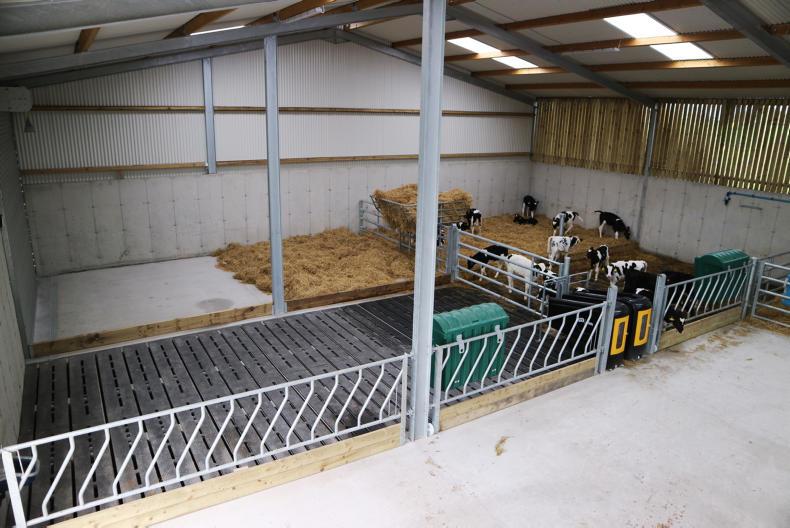
Calves
To the left of the shed are two large pens, divided between a 4.8m wide slatted area and a 4.8m solid bedded area. The pen to the front of the shed is slightly bigger with a total area of approximately 80m2, while the pen towards the back of the shed has an area of approximately 72m2. Calves require a minimum area of 1.8m2 per pen, which is not an issue here as Kevin plans to have approximately 25 calves per pen, for each station.
For the larger pen (80m2), this means calves would have an area of 3.2m2 each, while in the second slatted pen (72m2), calves have an area of 2.9m2.
“We could easily hold more calves in each of these pens if we needed too, so it all depends on how many calves we ultimately sell,” Kevin said.
Internally, the slatted tank is 4.1m wide and 2.4m deep. It is 17.5m long, fitted with an agitation point at one end. This size of a tank was not necessary for the amount of slurry the calves will produce, but does provide extra capacity for the remainder of the farm. Fixing the feeding stations over the slats helps to ensure the area around the station remains relatively clean and dry, as a lot of moisture will be produced in a small area. Diagonal feed barriers were used so that light weanlings could also be housed in the shed, before calving commences if required. All barriers were fitted with a wheel to make opening and closing easier.
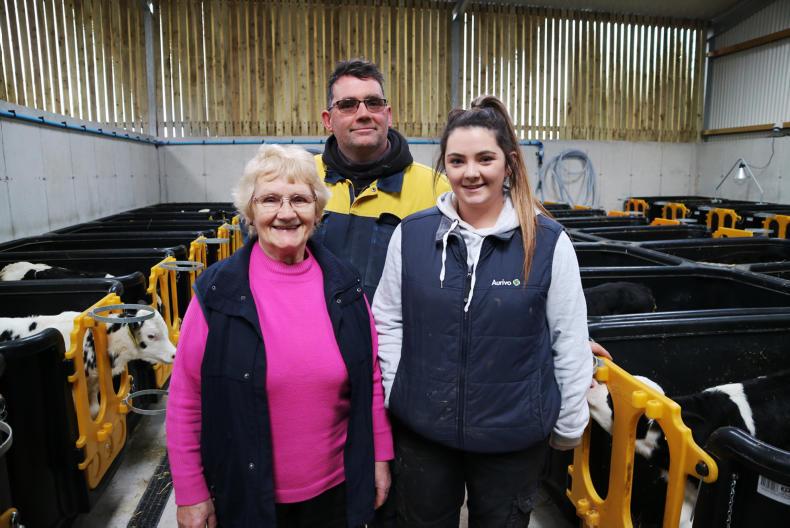
(L-R): Three generations working together, Tessie, Kevin and Ciara Callanan.
Cost
The total cost of the entire development came to approximately €140,000, including VAT. There was no grant sought for the shed as Kevin has plans to use it to upgrade the parlour in the coming years.
The total cost of the Evolution Calf Feeder and four feeding stations comes to €13,500, excluding VAT.
“We were probably five years thinking about doing this,” Kevin said. “Debt levels are low on the farm so when we were doing it, we didn’t want to spare anything.”
“I visited a lot of different calf sheds before I went ahead with this design. I always knew that I wanted a big airy shed and I never really saw any other sheds that suited what I wanted,” Kevin explained. “I wanted to try and have everything under the one roof.”
The slats for the shed were supplied by Banagher Concrete, and are fitted with Easyfix rubber mats.
Patrick Rooney from Tuam did the tank for the shed, with the groundwork being completed by Donal Hynes. Mike Kelly Engineering from Castledaly fabricated and erected the shed. Concrete work was completed by Dave McNamara Construction. LED lights are fitted throughout the shed by Gerry Kelly Electrical. Teemore Engineering supplied the penning for the shed, which was fitted by Brian Harris Engineering. The down pump was supplied and fitted by Mike Dillon Dairy Services, with plumbing completed by Gerry Duffy.
Stone was supplied by Vincent Cannon, while concrete was supplied by Esker Readymix.
Kevin Callanan and his daughter Ciara from Boherduff, Co Galway, have recently made a major investment on their farm, with the addition of an impressive new calf shed.
The farm milked 135 cows in 2018 with plans to push that on to 170 in 2019, according to Kevin. Steady expansion has been something the farm has been continuously doing since 2009, long before quotas were abolished. Calving on the farm begins in January, with the farm also having a liquid milk contract. In 2019, the farm aims to produce 1m litres.
“We were milking 70 cows in 2009, but there was never any issue getting a quota with Aurivo, so we have been growing by around 10 cows/year since then. We always wanted to stagger any increase.”
Kevin’s mother, Tessie, has seen the dramatic changes in the dairy industry over the past 55 years, when they first started dairying on the farm in Boherduff. “There will never again be changes like what I have seen in any generation. The way the farm has gone now there is no manual labour, compared to what it used to be. Technology has taken over on farms,” Tessie said.
The 82-year-old is still going strong, she is heavily involved when it comes to rearing calves on the farm. “I have never fed calves, and that’s the truth,” Kevin outlined. “It has always been done by Tessie and now my daughter Ciara – it skipped a generation! I couldn’t take the credit for it.”
Ciara is currently in her second year of the Dairy Herd Management course in Gurteen College and has plans to return to the farm full-time once this is completed.
“The plan would be to come back to the farm when I’m finished in Gurteen and go into a partnership,” Ciara outlined.
Kevin added: “I wouldn’t be doing any of this investment if it wasn’t for a younger generation coming after me. The hope is that the new shed will really help to streamline things.”

Design
The design itself is an unorthodox one, which Kevin pieced together after viewing several different sheds. However, having an automatic milk feeder was central to the design.
“We had a Volac automatic milk feeding system in the old shed for the last 10 years and I knew that I wanted to stay with the automatic feeder for this shed too,” Kevin said. “We only had six individual pens in the last shed and as you can see we went with a few more here.”
The shed itself is an A-roof design, measuring approximately 28.8m in length, or six bays. The shed is wide, with a span of approximately 16m. It stands at 4.2m to the eaves. Looking at figure one, two bays to the right hand side of the shed are completely dedicated to the individual pens. To the left of the shed are four group pens of varying size.

Pens
The 42 individual pens are lined out in two single rows along either wall, with a double row running down the centre of this area. Kevin made the decision to go with the JFC Agri Calf Cribs for a number of reasons. Plastic is naturally a warmer product than metal and it is also easier to clean.
The pens also have plastic slats on the base of them which is then bedded with straw. This helps to keep the bedding dry. “If we sell a calf it is very easy to pull out the pen and bring it down to the front of the pens, clean it and then put it back. At least you know whatever goes into the pen next is getting a good start,” Kevin said. The shed has a plumed in volume washer which is used for cleaning the individual pens which are also disinfected between calves.
Along the end wall of the shed are several power points, which can be used with a red lamp if there is a weak calf. All heifer calves will generally be kept on the farm, with bull calves sold as soon as possible.
“Calves would generally stay in the individual pens for up to two weeks as we are reluctant to train the bulls onto the automatic feeder if they will be sold a few days later,” Kevin said.
“It has been a difficult year for calf sales and we might only be averaging €50 to €70/calf, whereas we would always be getting up on €100 for the dairy-bred bulls. There have been no problems selling the Angus calves and we will be moving towards using a lot more Angus from this year.” Each pen currently costs approximately €365 excluding VAT.
A comprehensive drainage network is in place around the individual pens to carry any run-off to the slatted tank in the other side of the shed. All drainage is covered with grates to prevent straw blocking them.

Feeding
Once calves are moved out of the individual pens they go into a training pen, fitted with one of the four individual feeding stations for the JFC Evolution automatic feeder. The pen is approximately 4m by 4.8m in size. Once trained they will be moved to one of the three larger pens in the shed.
Beside the training pen is a storage area where the Evolution control unit itself is located, along with a sink and storage for the milk replacer. According to JFC, each feeding station can be located up to 7m away from the Evolution itself. The unit contains a dual hopper within the one unit which allows for two different types of milk replacer to be used if required.
Calves must be fitted with radio frequency identification tags, which work with the system.

Access
Access to the shed is provided along the long side of the building, through three roller doors, which where supplied by RollADoor. Kevin had looked at the idea of having a central passage running down through the shed but felt that it would waste a lot of space. Inlet ventilation for the shed is provided by Yorkshire boarding running along the back wall of the shed, while an opening at the apex of the shed,, protected by a ridge cap, provides the outlet ventilation. “If it was needed down the line then we could put in mechanical ventilation but we have a big airy shed so I don’t think it will be necessary,” Kevin said.

Calves
To the left of the shed are two large pens, divided between a 4.8m wide slatted area and a 4.8m solid bedded area. The pen to the front of the shed is slightly bigger with a total area of approximately 80m2, while the pen towards the back of the shed has an area of approximately 72m2. Calves require a minimum area of 1.8m2 per pen, which is not an issue here as Kevin plans to have approximately 25 calves per pen, for each station.
For the larger pen (80m2), this means calves would have an area of 3.2m2 each, while in the second slatted pen (72m2), calves have an area of 2.9m2.
“We could easily hold more calves in each of these pens if we needed too, so it all depends on how many calves we ultimately sell,” Kevin said.
Internally, the slatted tank is 4.1m wide and 2.4m deep. It is 17.5m long, fitted with an agitation point at one end. This size of a tank was not necessary for the amount of slurry the calves will produce, but does provide extra capacity for the remainder of the farm. Fixing the feeding stations over the slats helps to ensure the area around the station remains relatively clean and dry, as a lot of moisture will be produced in a small area. Diagonal feed barriers were used so that light weanlings could also be housed in the shed, before calving commences if required. All barriers were fitted with a wheel to make opening and closing easier.

(L-R): Three generations working together, Tessie, Kevin and Ciara Callanan.
Cost
The total cost of the entire development came to approximately €140,000, including VAT. There was no grant sought for the shed as Kevin has plans to use it to upgrade the parlour in the coming years.
The total cost of the Evolution Calf Feeder and four feeding stations comes to €13,500, excluding VAT.
“We were probably five years thinking about doing this,” Kevin said. “Debt levels are low on the farm so when we were doing it, we didn’t want to spare anything.”
“I visited a lot of different calf sheds before I went ahead with this design. I always knew that I wanted a big airy shed and I never really saw any other sheds that suited what I wanted,” Kevin explained. “I wanted to try and have everything under the one roof.”
The slats for the shed were supplied by Banagher Concrete, and are fitted with Easyfix rubber mats.
Patrick Rooney from Tuam did the tank for the shed, with the groundwork being completed by Donal Hynes. Mike Kelly Engineering from Castledaly fabricated and erected the shed. Concrete work was completed by Dave McNamara Construction. LED lights are fitted throughout the shed by Gerry Kelly Electrical. Teemore Engineering supplied the penning for the shed, which was fitted by Brian Harris Engineering. The down pump was supplied and fitted by Mike Dillon Dairy Services, with plumbing completed by Gerry Duffy.
Stone was supplied by Vincent Cannon, while concrete was supplied by Esker Readymix.










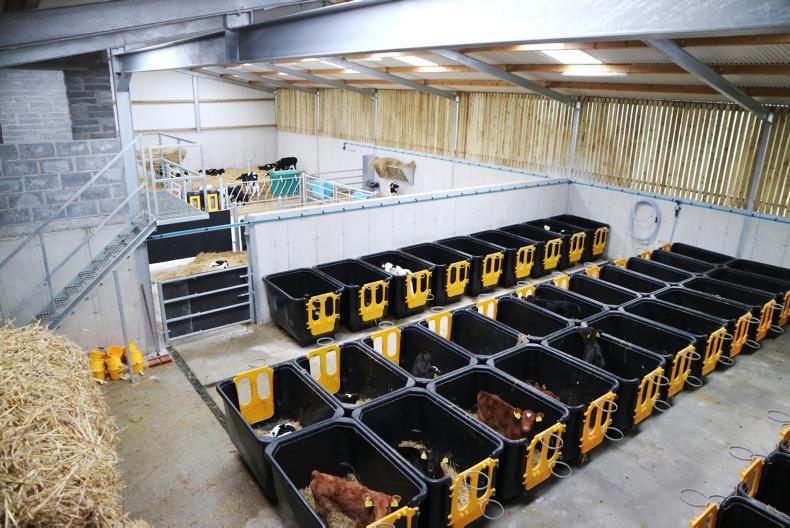
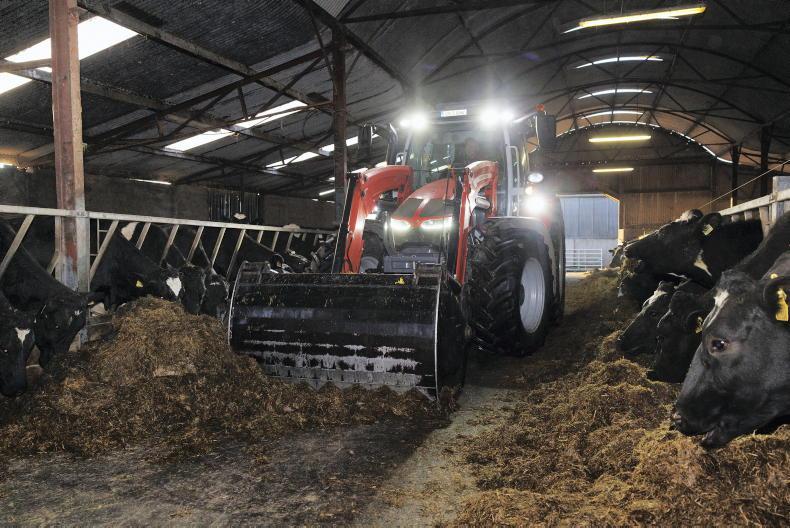
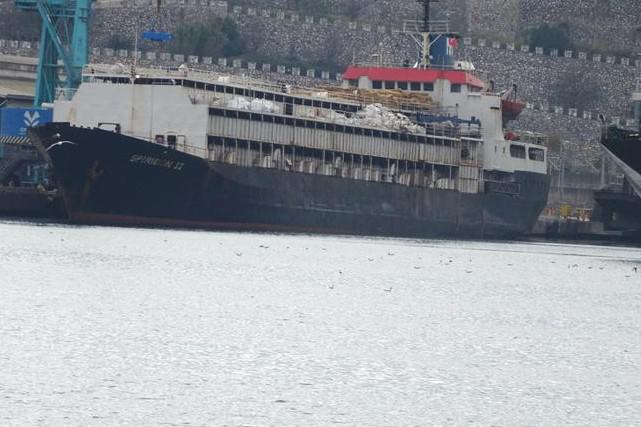
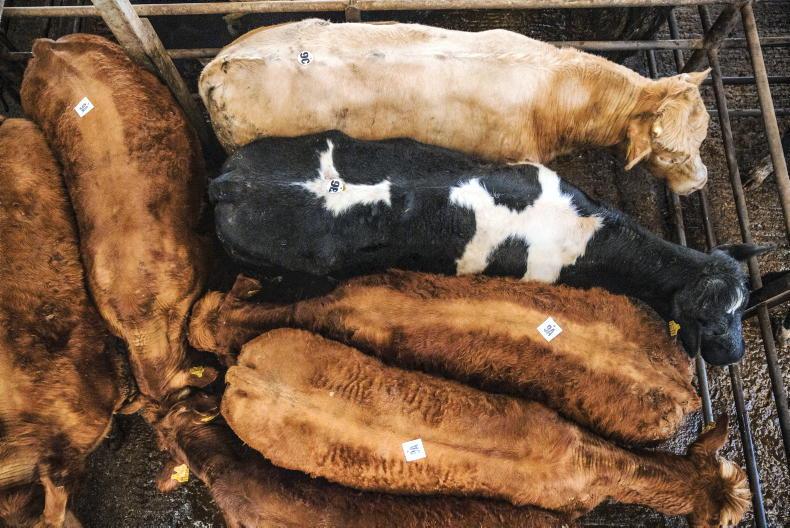
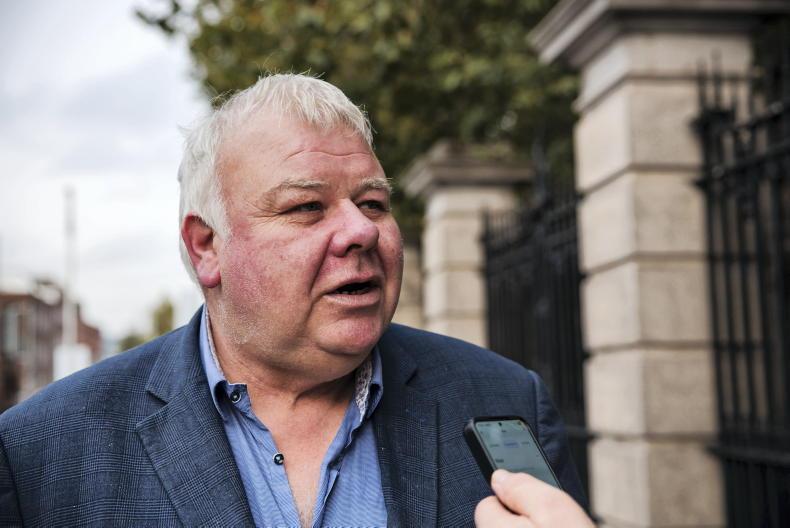
SHARING OPTIONS